Autre Magazine Party kicking off Freize Week LA in Silverlake, Los Angeles.
Autre Magazine Party kicking off Freize Week LA in Silverlake, Los Angeles.





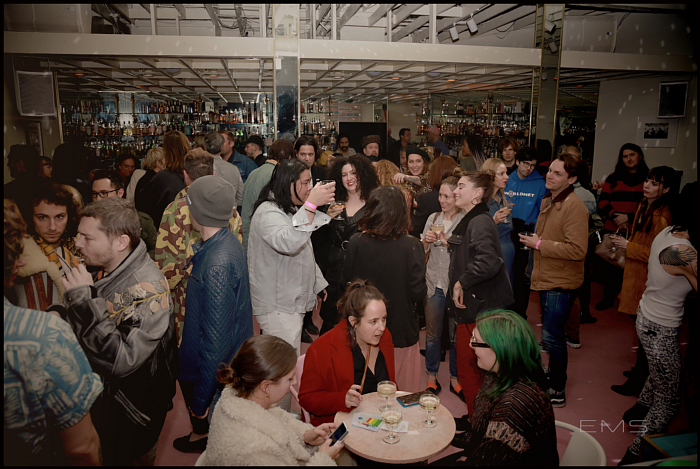



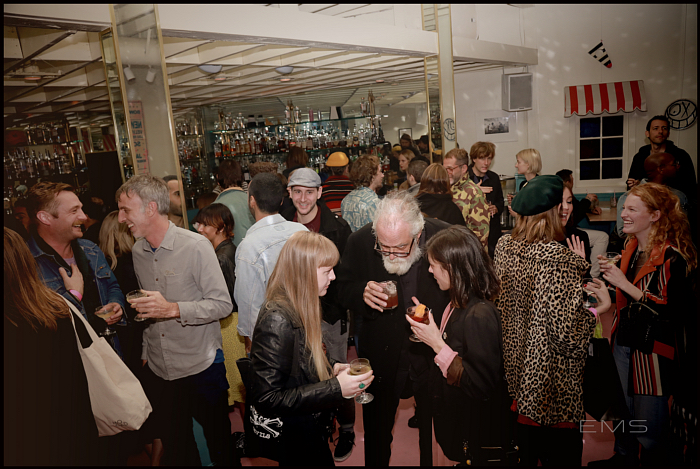

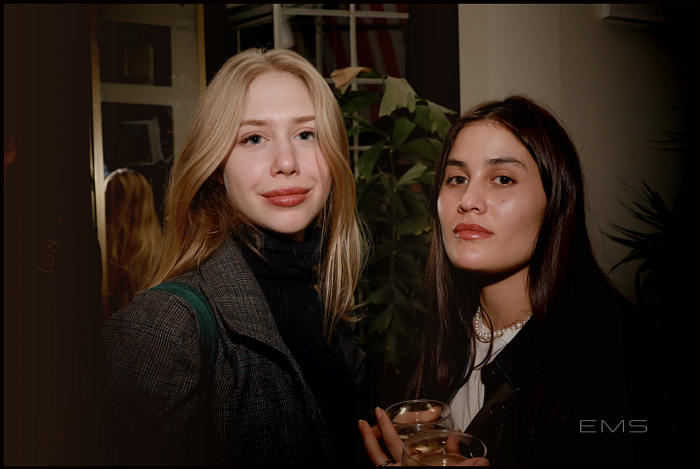


















February 5–April 28, 2019, GETTY CENTERP
Featuring one of Jacopo da Pontormo’s most renowned works, the Visitation, this exhibition presents this innovative altarpiece along with two exceptional portraits and preparatory drawings that reveal his creative process. Completed during Florence’s political upheaval at the end of the 1520s, the artist’s paintings from this period resonate with acute psychological intensity. Recent conservation of the Visitation reveals its stunning range of colors and exquisite details, which led to its first-time travel from Italy to the United States.
Generously supported by Janine and J. Tomilson Hill. Additional support provided by the Foundation for Italian Art and Culture (FIAC).
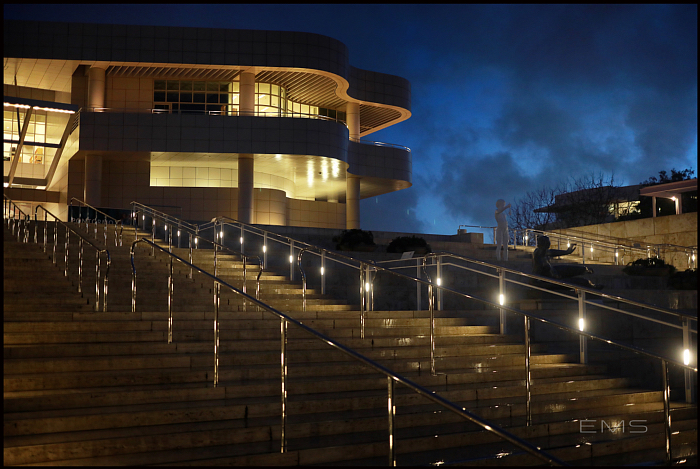








Organized by the J. Paul Getty Museum; the Morgan Library & Museum, New York; and the Gallerie degli Uffizi, Florence.
The exhibition has been organized to raise support for the conservation of the Parish Church and the former Franciscan convent of San Michele Arcangelo in Carmignano.





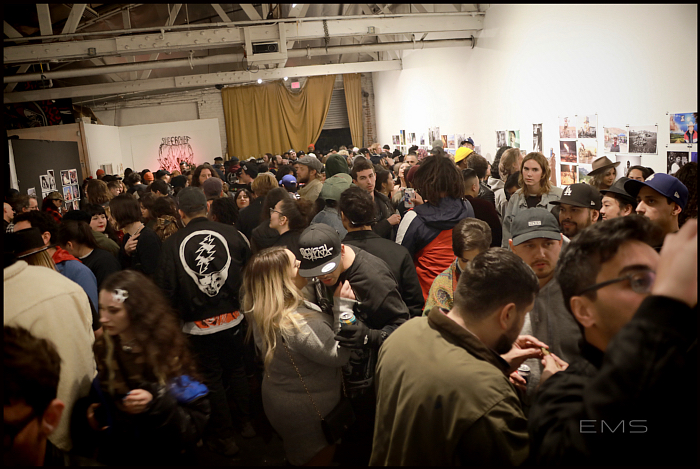

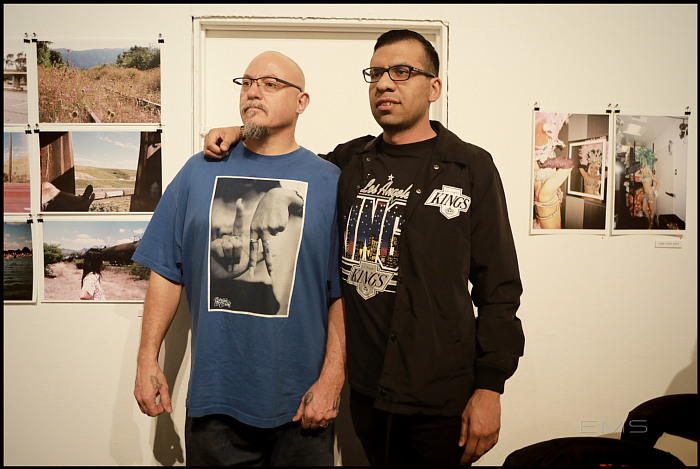

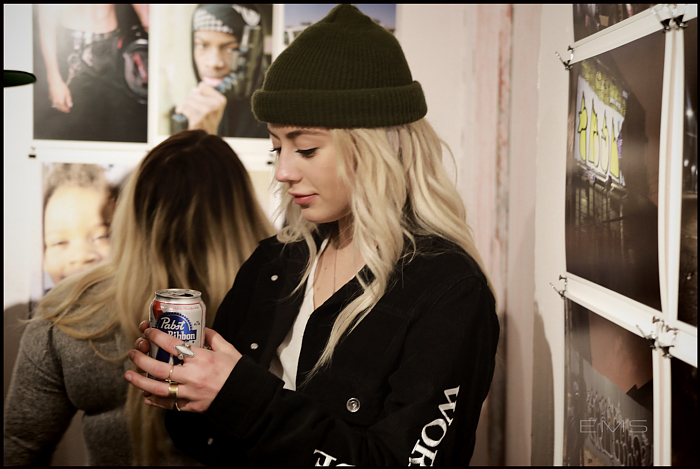










| A collaborative platform that links the international photography community; World-class artists / photographers, galleries, dealers, & publishers. |
| January 31st – February 3rd, 2019 The Historic Barker Hangar–Santa Monica, CA |






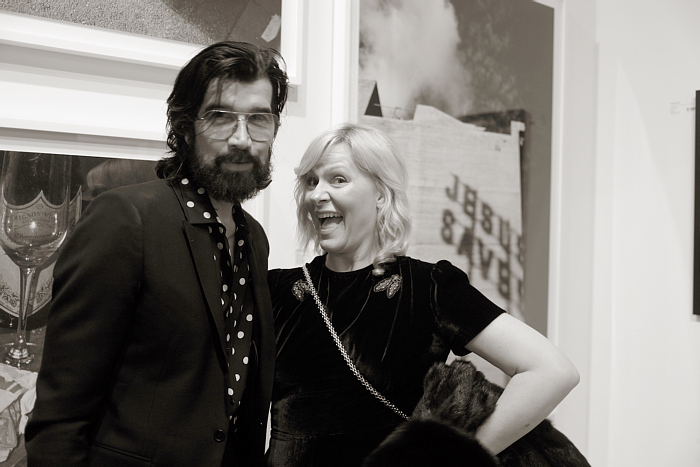








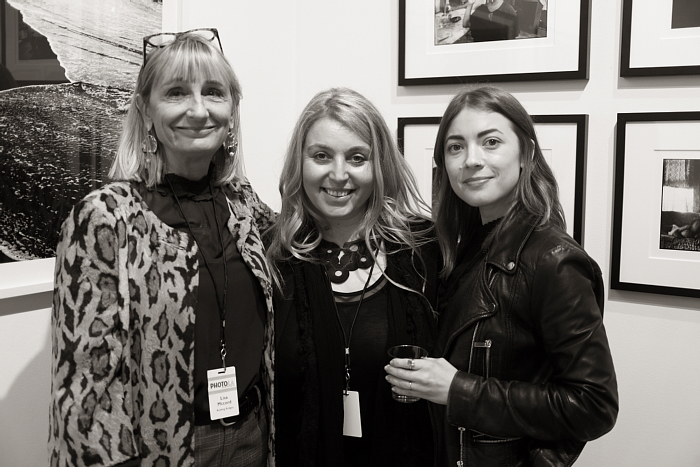

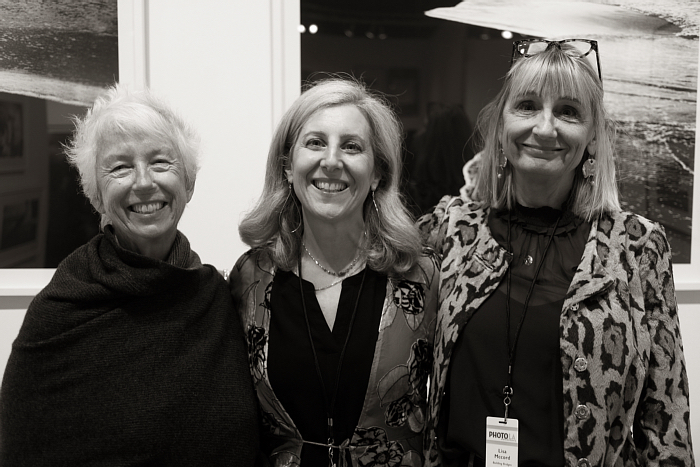
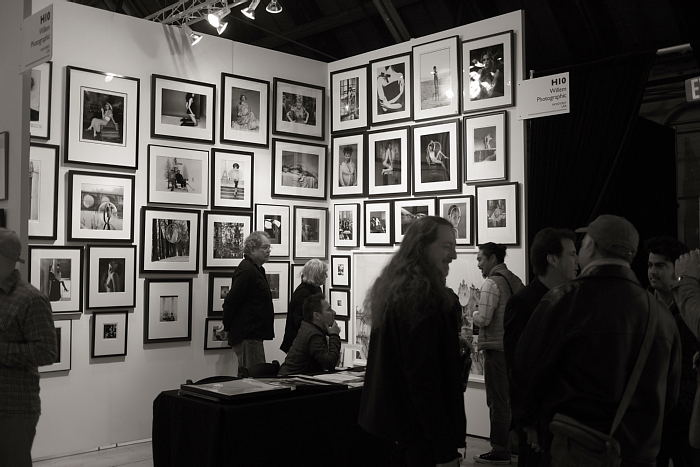

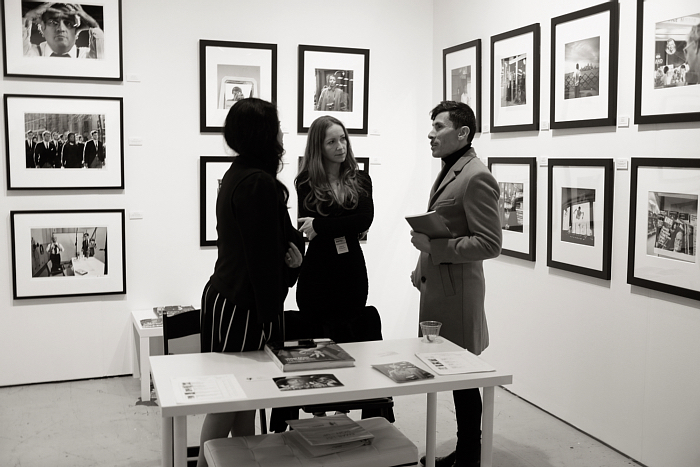








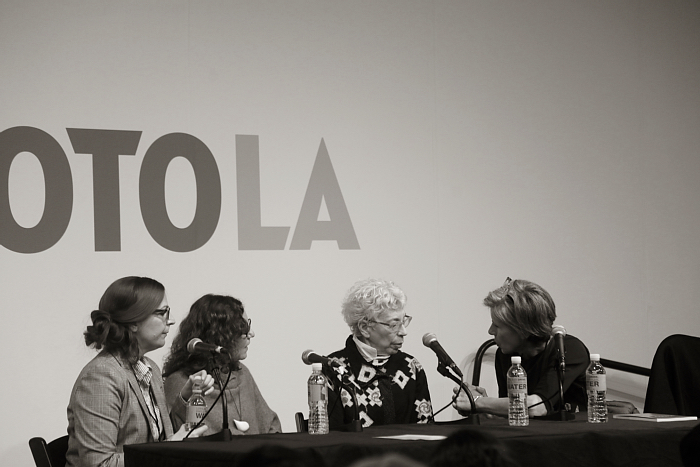
– for more information on additional images from this event please contact EMS at emsartscene@gmail.com or Instagram at @ericminhswenson
An opening of an exhibition of collaborative drawings by @justjorosenthal and @xzoeus.
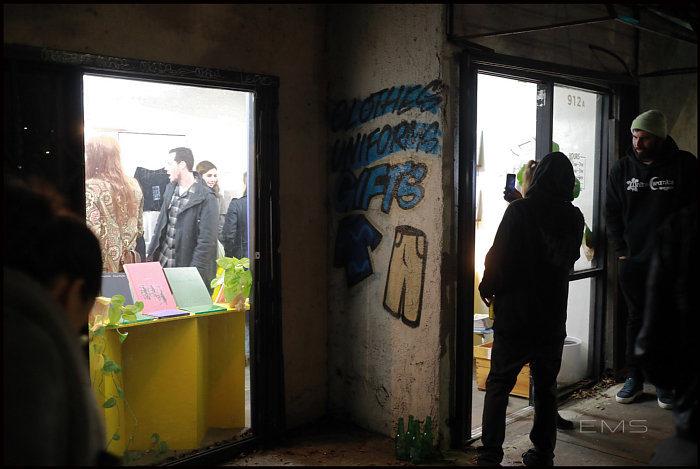








(from website) Celebrating today’s most significant creatives and leading contributors to the worlds of design and visual arts, the fair assembles 45 leading international galleries; prominent 20th-century and contemporary design dealers; a weekend of exciting programs; and 21POP, a special installation created by Stanlee Gatti.
FOG has become a focal point for the design and arts communities on the West Coast and further afield. The fair is synonymous with a uniquely pioneering spirit due to its bold hybrid approach and intimate presentation of art and design, dynamic programming on-site and its community-led mission to champion art and design in its historic Fort Mason setting. Building on FOG’s longstanding commitment to cultural institutions, the fair’s Preview Gala is honored to continue its crucial support of SFMOMA’s exhibitions and education programs. FOG represents a key moment in which the local and global community congregate to engage in critical dialogue, artistic exchanges and a shared passion for creative pursuits.


















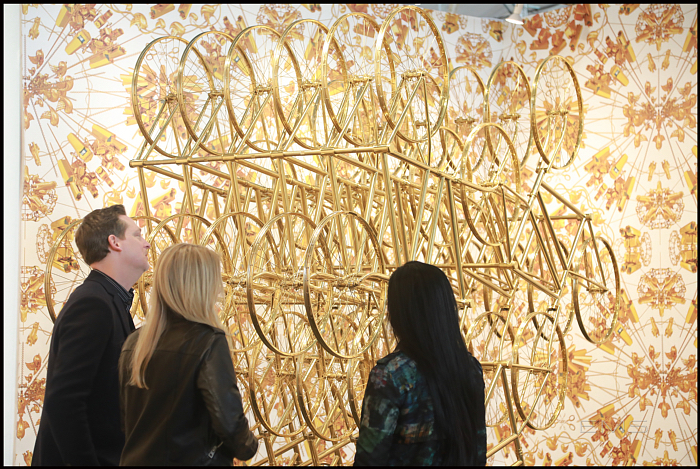


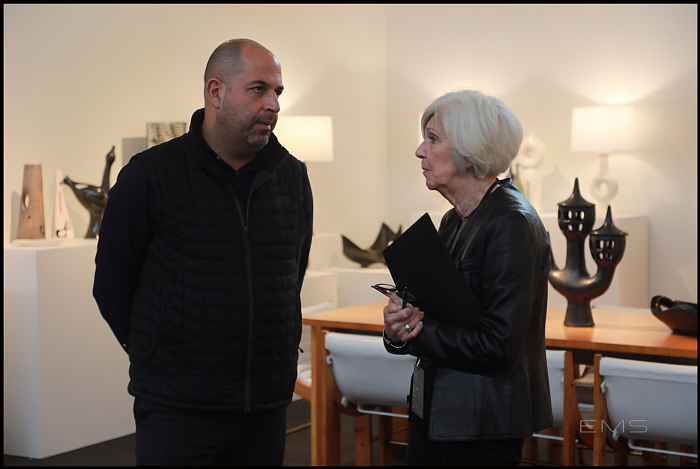



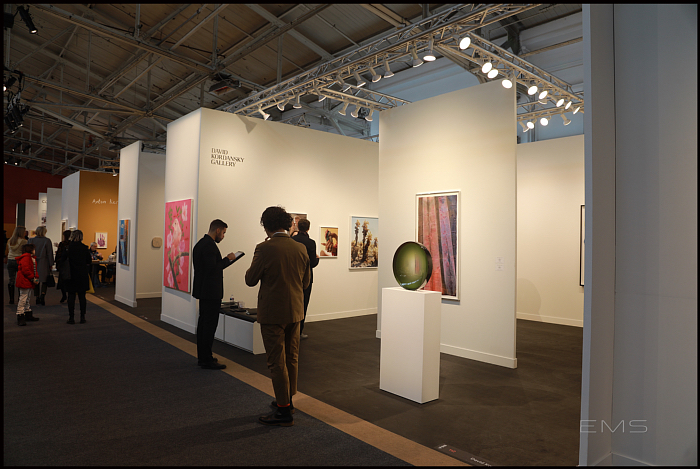


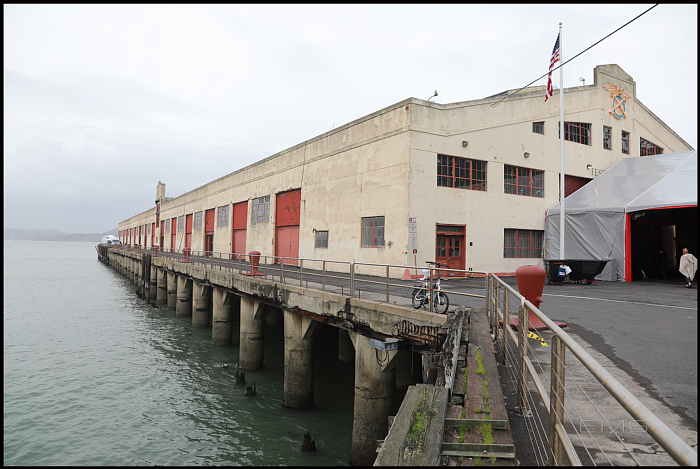
– for more information on additional images from this event please contact EMS at emsartscene@gmail.com or Instagram at @ericminhswenson
(from website) Untitled, Art is an international, curated art fair founded in 2012 that focuses on curatorial balance and integrity across all disciplines of contemporary art. Untitled, Art innovates the standard fair model by selecting a curatorial team to identify and curate a selection of galleries, artist-run exhibition spaces, and non-profit institutions and organizations, in dialogue with an architecturally designed venue. The next edition of Untitled Art, San Francisco will take place January 18 – 20, 2019 at Pier 35, 1454 The Embarcadero.
Jeffrey Lawson is the Founder and owner of Art Fairs Unlimited, LLC, Untitled, Art and ELEMENTS Global Trade Show, LLC. Lawson has produced and consulted on large-scale trade shows globally for the past 12 years. In 2010, Lawson founded Elements Showcase. In 2012, he established Untitled, Art, which launched in December 2012 on the sands of Miami Beach at Ocean Drive and 12th Street, and debuted on the West Coast in San Francisco in January 2017.
In July 2017 Untitled, Art appointed Manuela Mozo as Director to lead the international development of Untitled and oversee the curatorial and strategic vision of the fairs in Miami and San Francisco. Manuela Mozo was a partner at Simon Lee Gallery from 2013, where she established the gallery’s office in New York. Prior to this, Manuela was a Director at Metro Pictures and Skarstedt Gallery, both in New York. Manuela holds a Masters in Contemporary Art Theory and Cultural Studies from New York University and currently sits on the advisory board of RxArt.








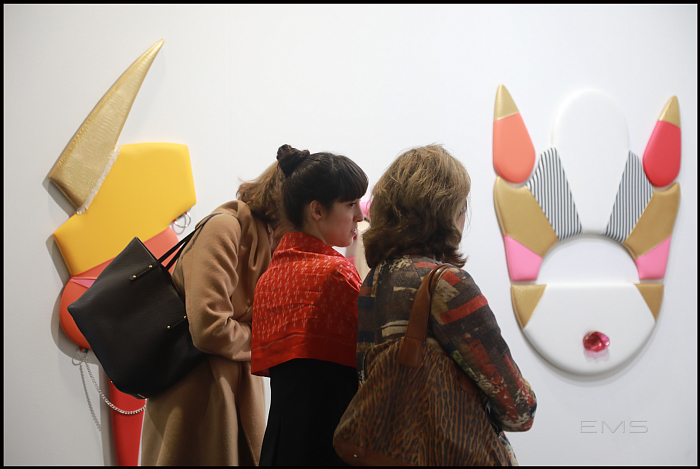


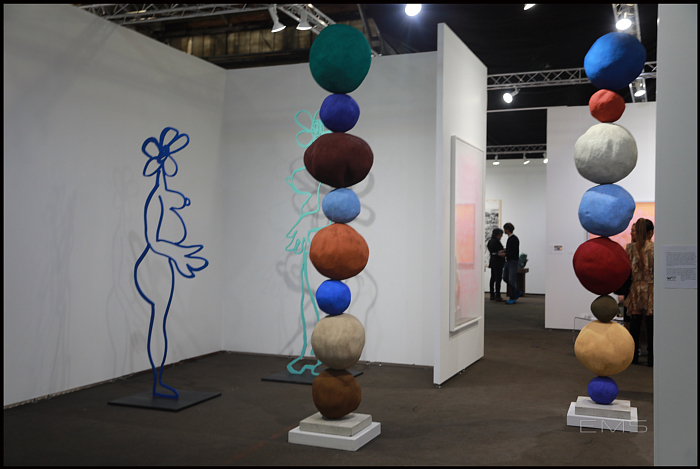








– for more information on additional images from this event please contact EMS at emsartscene@gmail.com or Instagram at @ericminhswenson
(from website) David Kordansky Gallery is pleased to announce Chromospheres, its first exhibition by Fred Eversley. The show of new sculptures will open on January 12 and remain on view through March 2, 2019. An opening reception will take place on Saturday, January 12 from 6:00pm until 8:00pm.
Based in Venice Beach for five decades, Fred Eversley is a key figure in the development of contemporary art from Los Angeles during the postwar period. His work is the product of a pioneering vision attuned to enduring principles of energy, motion, space, gravity, time, light, and color, and synthesizes elements from several 20th-century art historical lineages with roots in Southern California–most notably the Light and Space movement, with which he has long been associated. Chromospheres will feature the latest examples of Eversley’s iconic Parabolic Lens sculptures, an ongoing typology that is the result of continuous experimentation over the course of five decades. Made using clear resin and commercial dyes, these objects generate complex and highly luminous optical events for their viewers, encapsulating the mechanics of sight and the action of physical and metaphysical energies.
After formative experiences as an aerospace engineer, Eversley began in the late 1960s to produce multicolor, multilayer cast polyester sculptures informed by his knowledge of technology, scientific principles, the properties of various materials and his ability to develop his own specialized tools to manipulate them. Spinning liquid resin and dyes in molds affixed to turntables fashioned from lathes, potter’s wheels, and repurposed industrial machinery, he produced sculptures that in turn initiated a focused yet open-ended body of work that continues to the present day.
By adjusting the saturation of his dyes or pigments, the thickness of each layer of poured resin, the amount of catalyst responsible for eventually hardening it, and the speed at which he spins the mold, Eversley creates the Parabolic Lenses, disc-like objects that contain a wide variety of chromatic effects and varying degrees of transparency. These features only fully emerge after each sculpture undergoes a long polishing process whose technical and physical demands far exceed those of the casting itself.
All works of this type are defined by the parabolic curvature, on one side, of a concave surface, which reflects the spaces in which they are installed and creates ever-changing spatial illusions. (Eversley has often remarked that the parabola is the only shape that focuses all forms of energy toward a single point.) As light interacts with the sculpture, the sharp surface edge refracts it like a prism, each of the curved layers of color comes into focus, and viewers are given a new, constantly shifting experience of discovery that depends on their angle of approach. The world around them is transformed within: flipped upside down, its proportions distorted, and suffused with rich color.
Eversley has described his Parabolic Lenses as kinetic sculptures, though the motion to which he refers is the movement of viewers’ bodies and the corresponding variations in their perceptions of light and reflection. The intentionality of composition that makes such movement possible and invites natural, often instant, engagement by the observer, distinguishes his work from many of the West Coast minimalists who have been his peers and neighbors over the last five decades. Though he has produced large-scale works for a variety of contexts, Eversley does not privilege monumentality or imposing forms. Rather, he calls attention to universal forces responsible for moving and arranging light and matter, ephemeral atmospheric effects (including the sun’s interactions with sky and sea), and the formal poetry created when ineffable workings of the eye and mind are given formal expression.
Eversley’s singularity of purpose nonetheless results in sculptures that demonstrate a wide range of compositional variation. This can perhaps be observed most readily in his use of color. The earliest Parabolic Lenses all contained the same order and combination of blue, amber, and violet; he achieved a range of effects by varying only the speed at which he spun his molds, as well as the proportions of resin and dye concentrations. While some of the works on view in Chromospheres shift the old color combination into new orders, others are radiant two- and three-color lenses that make use of the entire color spectrum. Also on view are monochromatic lenses so saturated or dark that they appear to be completely opaque mirrors. In its own way, each of these works demonstrates how Eversley reveals fundamental properties of energy by harnessing time, gravity and centrifugal force to create parabolic forms and distribute color and matter within them. As the artist points out, “The genesis of energy is central to the mystery of our existence as animate beings in an inanimate universe. The original and ultimate source of all energy on earth is the sun. My early sculptures were directly influenced by the solar energy source; my new works take this theme deeper and beyond to the colors of the stars, which we can not see, but only imagine.”











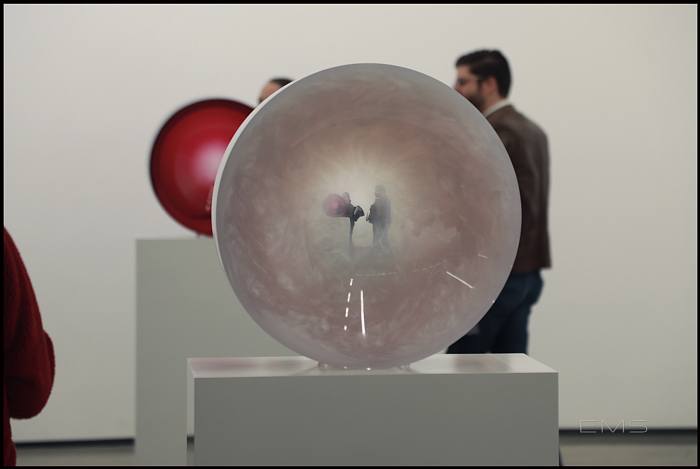
– for more information on additional images from this event please contact EMS at emsartscene@gmail.com or Instagram at @ericminhswenson
(from Marciano gallery) September 28, 2018 – March 3, 2019Marciano Art Foundation is pleased to announce the third MAF Project in the Theater Gallery, a solo exhibition of Chinese artist Ai Weiwei, on view from September 28, 2018 — March 3, 2019. This exhibition is Ai’s first major institutional exhibition in Los Angeles and will feature the new and unseen work Life Cycle (2018) – a sculptural response to the global refugee crisis. The exhibition will also present iconic installations Sunflower Seeds (2010) and Spouts (2015) within the Foundation’s Theater Gallery.
On view for the first time in the Black Box, Life Cycle (2018) references the artist’s 2017 monumental sculpture Law of the Journey, Ai’s response to the global refugee crisis, which used inflatable, black PVC rubber to depict the makeshift boats used to reach Europe. In this new iteration, Life Cycle depicts an inflatable boat through the technique used in traditional Chinese kite-making, exchanging the PVC rubber for bamboo.
Suspended around the boat installation are figures crafted from bamboo and silk. In 2015, Ai began creating these figures based on mythic creatures from the Shanhaijing, or Classic of Mountains and Seas. The classic Chinese text compiles mythic geography and myth; versions of the Shanhaijing have existed since the 4th century B.C. These works are crafted in Weifang, a Chinese city in Shandong province with a tradition of kite-making dating back to the Ming dynasty (1368–1644).
Windows (2015), which hangs along the perimeter of the Black Box, draws from Chinese mythology, the tales and illustrations of the Shanhaijing, the history of 20th-century art, and the life and works of the artist. The vignettes feature a dense mix of biographical, mythological, and art historical references to craft a contemporary story. Similar to chapters in a book, or acts in a play, the various scenes include the mythological creatures of the Shanhaijing alongside bamboo versions of Ai’s earlier works, such as Template and Bang, and homages to Marcel Duchamp and Jasper Johns. A central theme running through the ten vignettes is freedom of speech and Ai’s efforts in defending it. Motifs recurring in Ai’s practice—the bicycle, the alpaca, symbols of state surveillance and control—are repeated and multiplied.
This multifaceted installation is a continuation of Ai’s ongoing engagement with politics and social justice. It follows the release of his feature-length documentary, Human Flow (2017), which depicts the refugee crisis on film. In the artist’s op-ed for the Guardian in February 2018, he writes, “I was a child refugee. I know how it feels to live in a camp, robbed of my humanity. Refugees must be seen as an essential part of our shared humanity.”
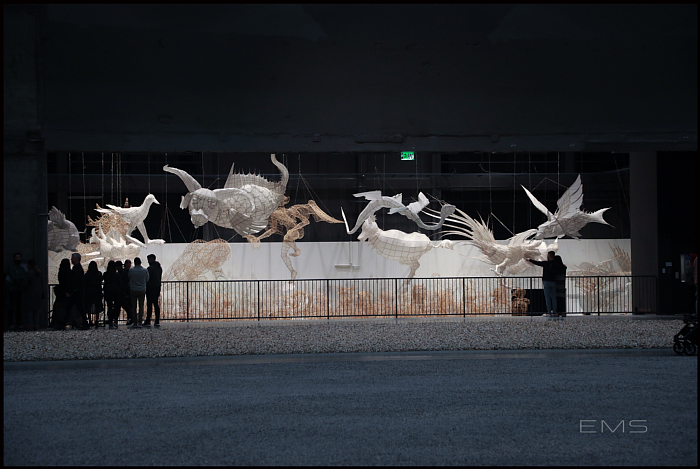

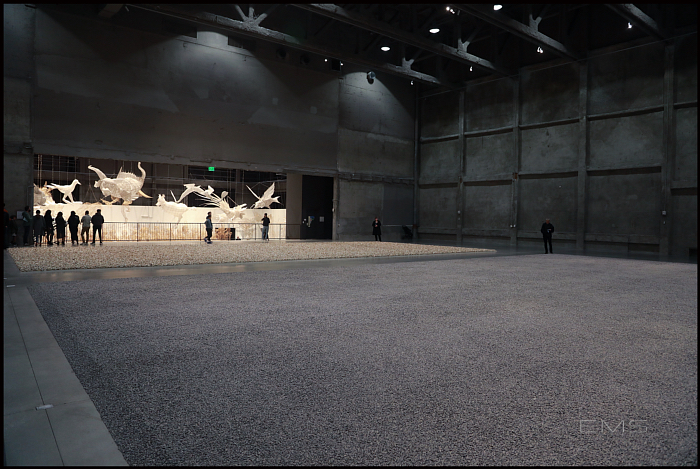

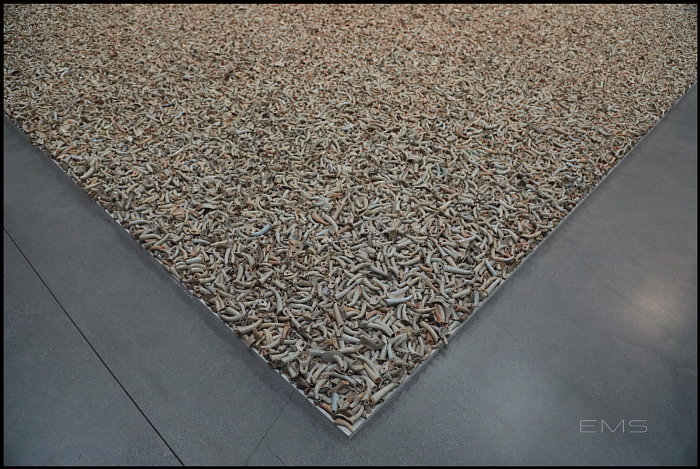







– for more information on additional images from this event please contact EMS at emsartscene@gmail.com or Instagram at @ericminhswenson
Art is an after-reflection.
—Urs Fischer
Gagosian is pleased to present Images, an exhibition of new paintings and sculptures by Urs Fischer.
In Fischer’s work, images emerge from an odd liminal space between the real and the imagined, between what does, and could, exist. Over the past year, he has been creating paintings digitally, inventing things, rooms, and spaces using color and light. On a screen, as opposed to paper or canvas, Fischer is able to paint with light itself—moving illuminated pixels around, juxtaposing clean lines and gradients, and reflecting on the subtle atmospheric changes across day and night, summer and winter, Los Angeles and New York.
Silkscreened onto aluminum panels, the paintings in this exhibition—vertical compositions broken up into multiple rectangular passages—take on the scale of modern abstraction, yet they all describe imaginary interior and exterior worlds. Windows appear often: one glows behind a gauzy white curtain, looking onto swaying palm trees; another reflects a sunrise or sunset, with a still life on a table barely visible through fingerprints on the glass; and another frames a building across the street, where nine more windows reveal smeared and fragmented California views. In other paintings, Fischer imagines canvases hanging on walls, hit with swathes and squares of light pouring in from an unseen source. The fictional paintings and sculptures depict animals, food, city streets, or messy brushstrokes, but they—like the light—only exist within Fischer’s constructed environments; they need not adhere to any history, law, or logic.
Fischer presents characters and drawings that seem capable of disappearing at any moment. In one painting, a small orange bird sits on a branch, floating in a dark gray sky. Though its legs are in sharp focus, its body becomes a vaporous orb, glowing within the surrounding clouds. And in an uncanny sculptural ecosystem below, two motorized snails slowly wander through the gallery, leaving trails of slime in their wake. These gleaming lines, which evaporate over time, wind across the floor, uniting the other sculptures—a smoking volcano, a snowman, a palm tree—within a swirling, ephemeral landscape. Looming over the scene, the surrounding paintings form vivid, even cinematic, backdrops: a montage of disparate settings for a small, peculiar world.
– FROM GAGOSIAN WEBSITE








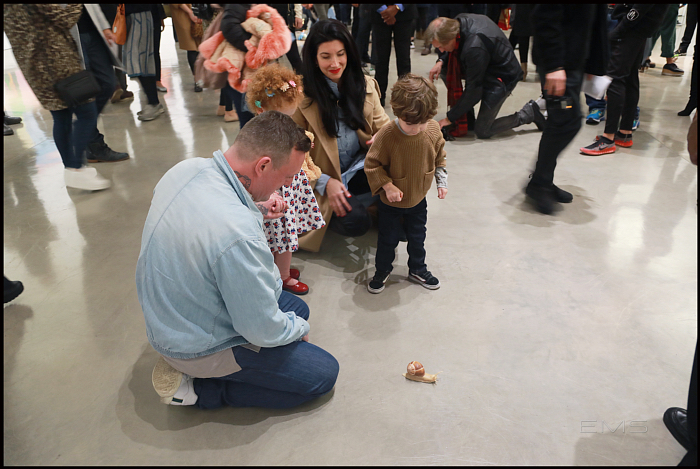




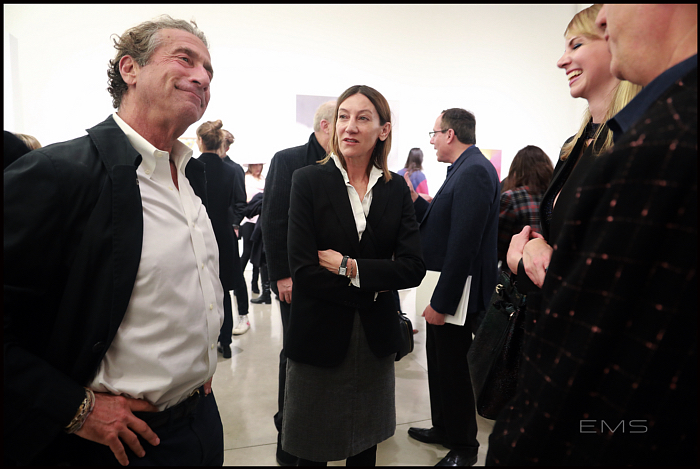




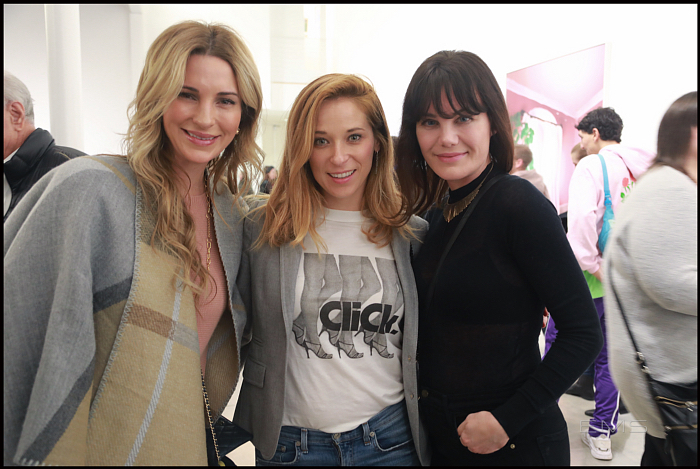

– for more information on additional images from this event please contact EMS at emsartscene@gmail.com or Instagram at @ericminhswenson

Recent Comments